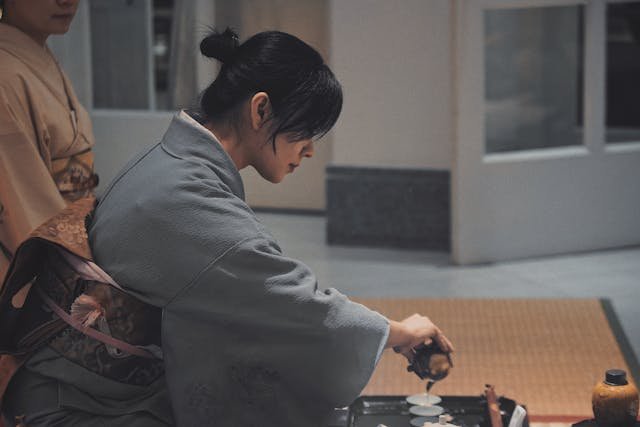Understanding Japanese Culture
Japanese lifestyle is deeply rooted in standards that emphasize admire, harmony, and social hierarchy. These foundational components have an effect on etiquette and the manner people engage in each public and private settings. Respect for others, especially elders and authority figures, is paramount in Japan. This recognize manifests in diverse approaches, from language usage that includes honorifics to the practice of bowing, which serves as a gesture of deference.
Harmony, or “wa,” is another core fee that plays a critical position in guiding social conduct. It encourages people to prioritize group consensus over non-public evaluations, promoting a experience of solidarity and collaboration. This cultural emphasis on concord can be found in institution settings, wherein selections are commonly made together rather than independently. Disrupting concord, even unintentionally, can lead to pain and is regularly prevented in any respect fees.
Additionally, social hierarchy is extensive in Japanese society, influencing how people relate to each other based on age, popularity, and seniority. This hierarchy is evident in both professional and personal interactions, where using title and right etiquette is important in demonstrating awareness of 1’s role relative to others. For instance, younger people are anticipated to show courtesy to their elders via respectful language and behaviors, which include supplying their seat on public transportation.
These traditional values not most effective form each day interactions but also form the muse of social customs that be triumphant in various settings, consisting of formal gatherings and casual meet-ups. Understanding Japanese way of life calls for an appreciation of these ideas, as they tell etiquette and behaviors that would vary significantly from those found in Western societies. By spotting the significance of respect, harmony, and social hierarchy, travelers can navigate social conditions extra efficaciously and interact definitely with the local culture.
Dining Etiquette in Japan
When eating in Japan, information and adhering to unique customs can beautify the revel in and show appreciate for the nearby lifestyle. One of the essential elements of eating in Japan is the right use of chopsticks. It is vital to deal with chopsticks effectively, as wrong usage can be taken into consideration impolite. For instance, do no longer stick chopsticks vertically right into a bowl of rice, as this resembles the ritual offered to the deceased. Instead, location them on a chopstick rest or lay them down beside your bowl while now not in use.
Before starting a meal, it’s miles commonplace to explicit gratitude through saying “itadakimasu,” which interprets to “I humbly get hold of.” This word acknowledges the effort that went into making ready the meal and indicates appreciation for the meals. At the conclusion of the meal, pronouncing “gochisousama deshita,” this means that “thank you for the meal,” is a well mannered way to deliver your appreciation to the host and the chefs.
Food presentation holds amazing significance in Japanese subculture. Diners ought to admire the plating and association of dishes, as this displays the season and the chef’s talent. When sharing dishes, including at some point of own family-fashion eating, don’t forget to apply the alternative give up of your chopsticks to switch food, as this technique avoids direct contact and is taken into consideration extra respectful.
Regarding fee practices, tipping is generally not customary in Japan. Excellent carrier is already protected within the price, and leaving a tip may be viewed as an insult. Instead, when settling the bill, present the fee to the body of workers in a small tray in preference to handing it without delay. Understanding those eating etiquette nuances will help foster a deeper appreciation for Japanese culture and create harmonious interactions while enjoying the country’s culinary offerings.
Communication Styles and Non-Verbal Cues
Communication in Japan significantly diverges from Western norms, specifically through its emphasis on indirect conversation patterns, which are deeply rooted in cultural values. Japanese conversations often prioritize retaining ‘wa’, or concord, which underscores the importance of keeping relationships and warding off disagreement. As such, it is not unusual for people to specific themselves subtly, implying as opposed to stating their thoughts directly. This could make know-how intentions tough for those strange with the culture, necessitating careful remark of context and nuance.
Body language and non-verbal cues play pivotal roles in communication in Japan. For example, gestures, facial expressions, and eye contact are quintessential to conveying messages. Silence, too, is often utilized efficiently, as it may characterize contemplation, admire, or settlement. This contrasts with many Western cultures, in which silence may be perceived as awkward or uncomfortable. Understanding the significance of those non-verbal signals allows for more significant interactions and allows to keep away from misinterpretations.
The principles of ‘tatemae’ and ‘honne’ similarly illustrate the complexities of communique in Japanese society. ‘Tatemae’ refers to the public facade that people gift, often characterized by way of politeness and conformity to social expectations. Conversely, ‘honne’ represents one’s proper emotions and beliefs, which can be stored private in choose of social harmony. Recognizing while to navigate between these factors can greatly beautify go-cultural conversation.
In addition to verbal and non-verbal elements, bowing is a crucial issue that underscores respect and ritual inside interactions. Different styles of bows deliver wonderful meanings, from greetings to apologies, demonstrating a deep-rooted cultural reverence. Personal area preferences also differ, with the Japanese typically valuing a positive physical distance at some stage in conversations. Understanding these subtleties of conversation will in the end facilitate richer, more respectful exchanges even as journeying in Japan.
Customs and Practices to Respect
When traveling Japan, expertise and respecting neighborhood customs and practices is essential to ensuring a wonderful experience. Prominent amongst those is the expectancy of getting rid of shoes before getting into homes, sure temples, and conventional inns like ryokans. This exercise demonstrates cleanliness and respect for the personal area of others. Therefore, tourists need to be organized to observe these customs diligently and may want to put on smooth socks or cushty indoor shoes.
Greetings additionally play a critical role in Japanese lifestyle. The traditional bow is the usual manner to greet others, signifying admire rather than a handshake, which may be much less common. It is important to gauge the diploma of bowing suitable for the context; deeper bows carry extra appreciate. When addressing a person, it is normal to apply their professional title or surname prefixed via “san,” a mark of politeness and formality.
Temples and shrines are wealthy in cultural significance, and visitors must technique these websites with mindfulness. When dealing with services, inclusive of sacred cash or incense, tourists ought to examine the nearby practices. Typically, cash are tossed into the providing box, accompanied through a moderate bow. Photography can be limited in positive regions, so it is prudent to test for signs and symptoms or ask for permission before taking pics, ensuring respect for spirituality and privateness.
Appropriate apparel ought to also be considered when journeying sacred web sites or public areas. Wearing modest garb is really helpful, as it displays courtesy in the direction of the cultural practices everyday in Japan. Travelers have to avoid carrying revealing outfits, and opt for garb this is each respectful and snug. Understanding these customs and practices will enhance your revel in, allowing for a adventure that respects the wealthy tapestry of Japanese way of life.


